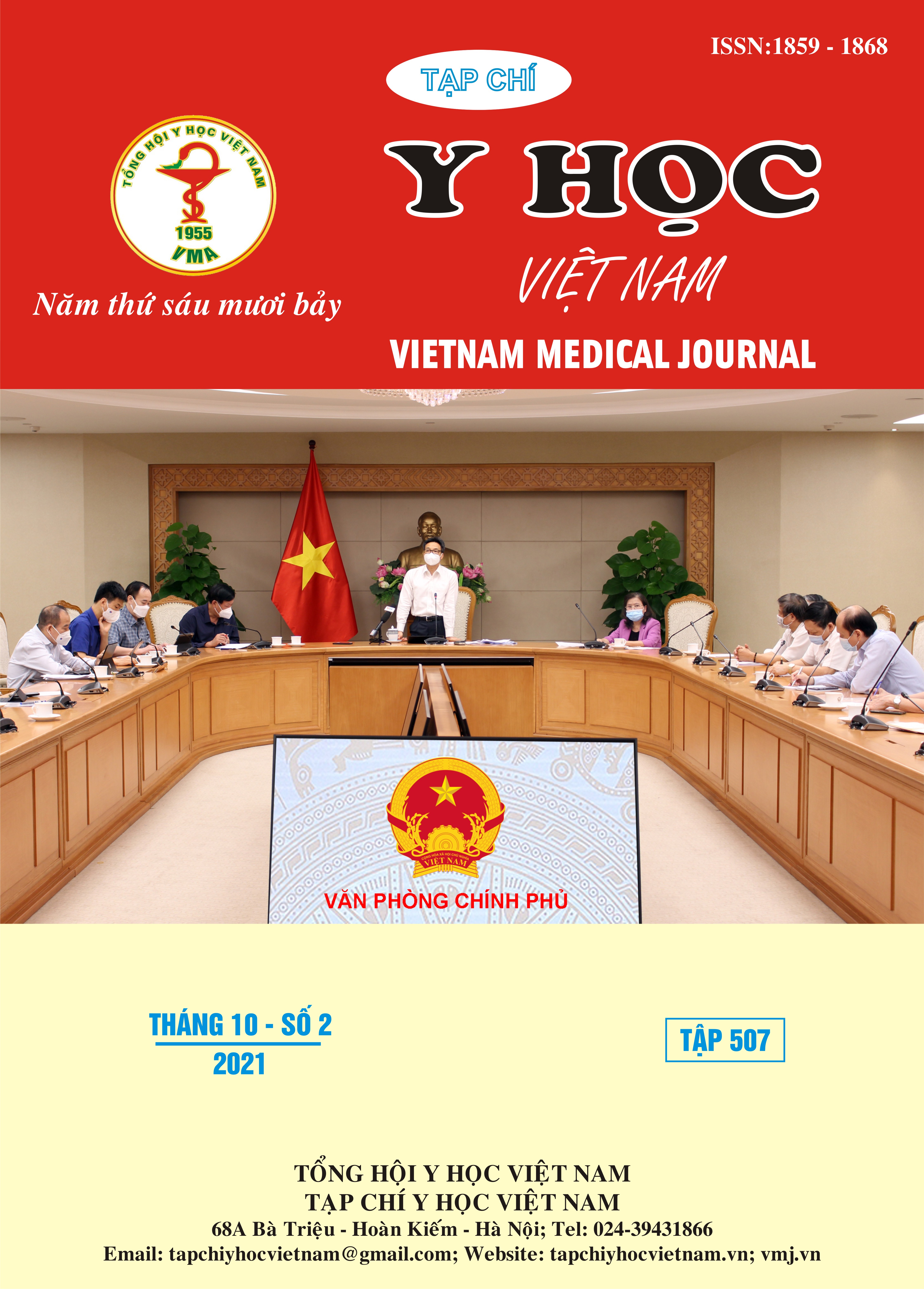CONSTRUCT THE MODEL OF COST-EFFECTIVENESS ANALYSIS OF PEMBROLIZUMAB VERSUS STANDARD THERAPY IN THE TREATMENT OF NON- SMALL CELL LUNG CANCER IN VIETNAM
Main Article Content
Abstract
Cost-effectiveness analysis is a tool used to aid decisions about which medical care should be offered, in which constructing model is considered one of the most important steps. Pembrolizumab (PEM) was recognized by the Food and Drug Administration (FDA) in 2016 as the first-line drug in the treatment of non-small cell lung cancer (NSCLC). However, the high price of drug has been creating a large barrier in using this drug in practice, especially in developing countries like Vietnam. It is necessary to consider the feasibility of drug selection in clinical practice based on cost - effectiveness analysis. With modeling research method combined with literature review and indepth-interview with clinical experts, the cost – effectiveness analysis model has been built based on Microsoft Excel 2013 software with model structure including calculation pages for outcome parameters (Incremental cost – effectiveness ratio (ICER), Sensitivity analysis). The model allows to evaluate the cost – effectiveness of PEM monotherapy versus chemotherapy in the treatment of NSCLC in Vietnam.
Article Details
Keywords
Cost-effectiveness, model, pembrolizumab, non-small cell lung cancer
References
2. Bhadhuri A. et al (2019), "Cost effectiveness of pembrolizumab vs chemotherapy as first-line treatment for metastatic NSCLC that expresses high levels of PD-L1 in Switzerland", Swiss Med Wkly, 149, pp. w20170.
3. Georgieva M. et al (2018),"Cost-effectiveness of pembrolizumab as first-line therapy for advanced non-small cell lung cancer", Lung Cancer, 124, pp. 248-254.
4. Huang M et al (2019), "Cost–effectiveness of pembrolizumab versus chemotherapy as first-line treatment in PD-L1-positive advanced non-small-cell lung cancer in the USA", Immunotherapy, 11(17), pp. 1463–1479.
5. Huang M. et al (2017), "Cost Effectiveness of Pembrolizumab vs. Standard-of-Care Chemotherapy as First-Line Treatment for Metastatic NSCLC that Expresses High Levels of PD-L1 in the United States", Pharmacoeconomics, 35(8), pp. 831-844.
6. Insinga R. P. et al (2018), "Cost-effectiveness of pembrolizumab in combination with chemotherapy in the 1st line treatment of non-squamous NSCLC in the US", J Med Econ, 21(12), pp. 1191-1205.
7. Insinga R. P. et al (2019), "Cost-effectiveness of pembrolizumab in combination with chemotherapy versus chemotherapy and pembrolizumab monotherapy in the first-line treatment of squamous non-small-cell lung cancer in the US", Curr Med Res Opin, 35(7), pp. 1241-1256.
8. She L. et al (2019), "Cost-effectiveness analysis
of pembrolizumab versus chemotherapy as first-line treatment in locally advanced or metastatic non-small cell lung cancer with PD-L1 tumor proportion score 1% or greater", Lung Cancer. 138, pp. 88-94.
9. Wan N. et al (2020), "Cost-effectiveness analysis of pembrolizumab plus chemotherapy with PD-L1 test for the first-line treatment of NSCLC, Cancer Med, 9(5), pp. 1683-1693.
10.Wu B. et al (2020), "The effect of PD-L1 categories-directed pembrolizumab plus chemotherapy for newly diagnosed metastatic non-small-cell lung cancer: a cost-effectiveness analysis", Transl Lung Cancer Res, 9(5), pp. 1770-1784.
11.Zeng X. et al (2017), "Cost-effectiveness analysis of pembrolizumab plus chemotherapy for previously untreated metastatic nonsmall cell lung cancer in the USA", TheOncologist, 22, pp. 1392–1399.
12.Zhou K. et al (2019), "Cost-effectiveness analysis of pembrolizumab monotherapy and chemotherapy in the non-small-cell lung cancer with different PD-L1 tumor proportion scores", Lung Cancer, 136, pp. 98-101.


